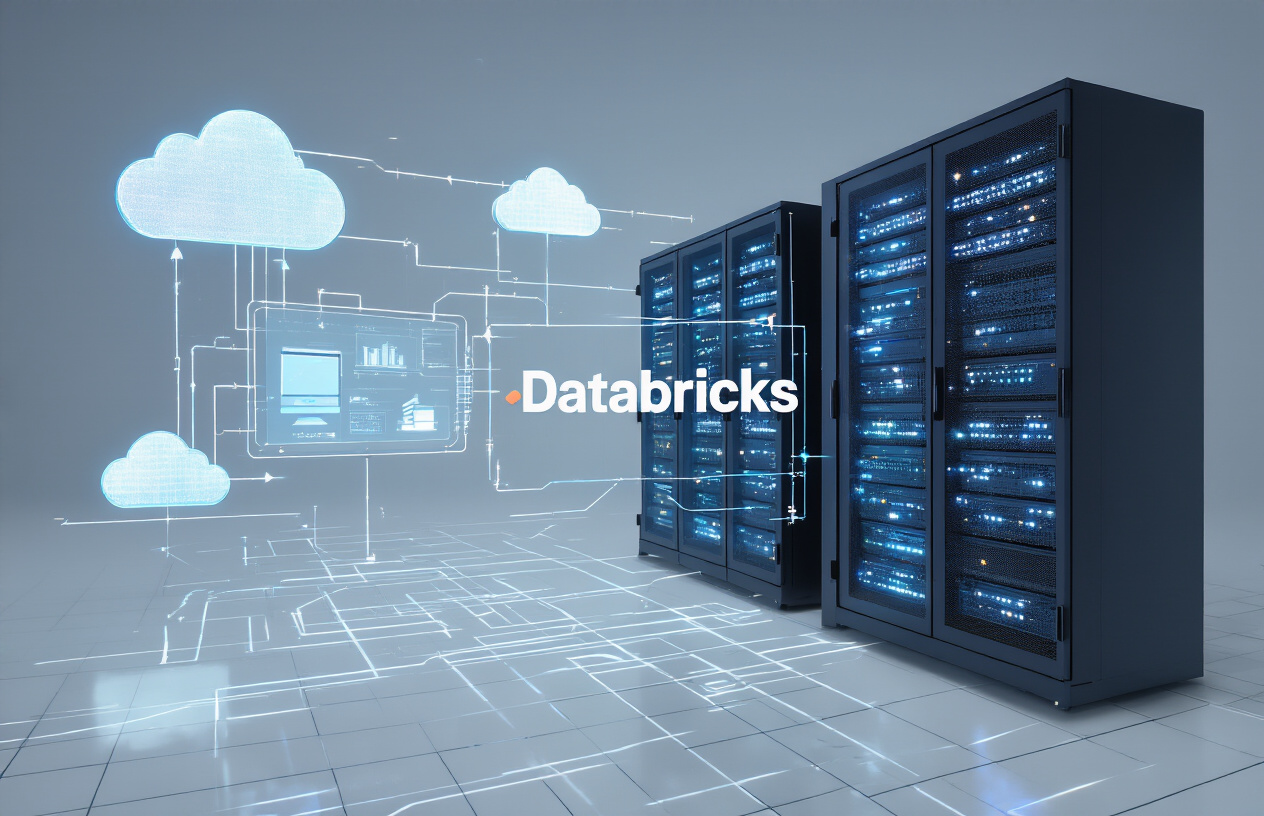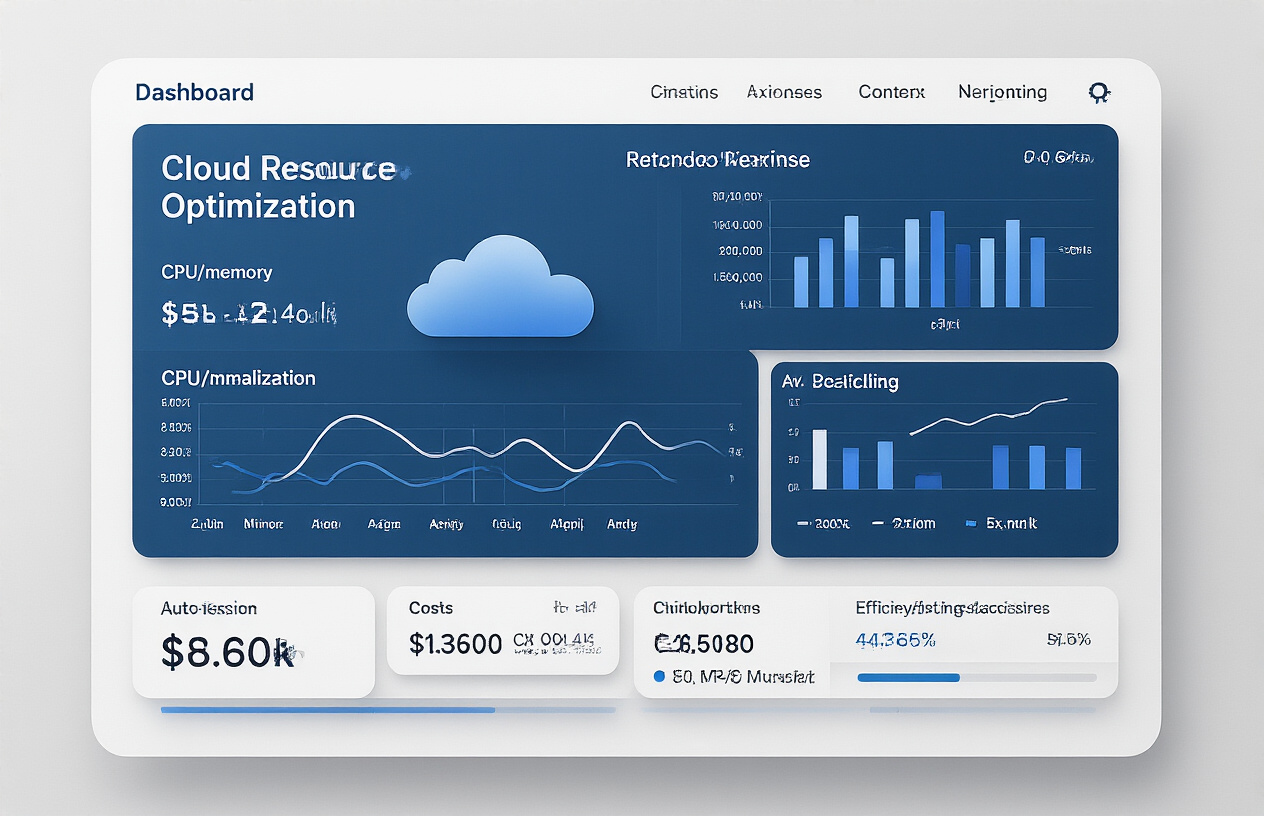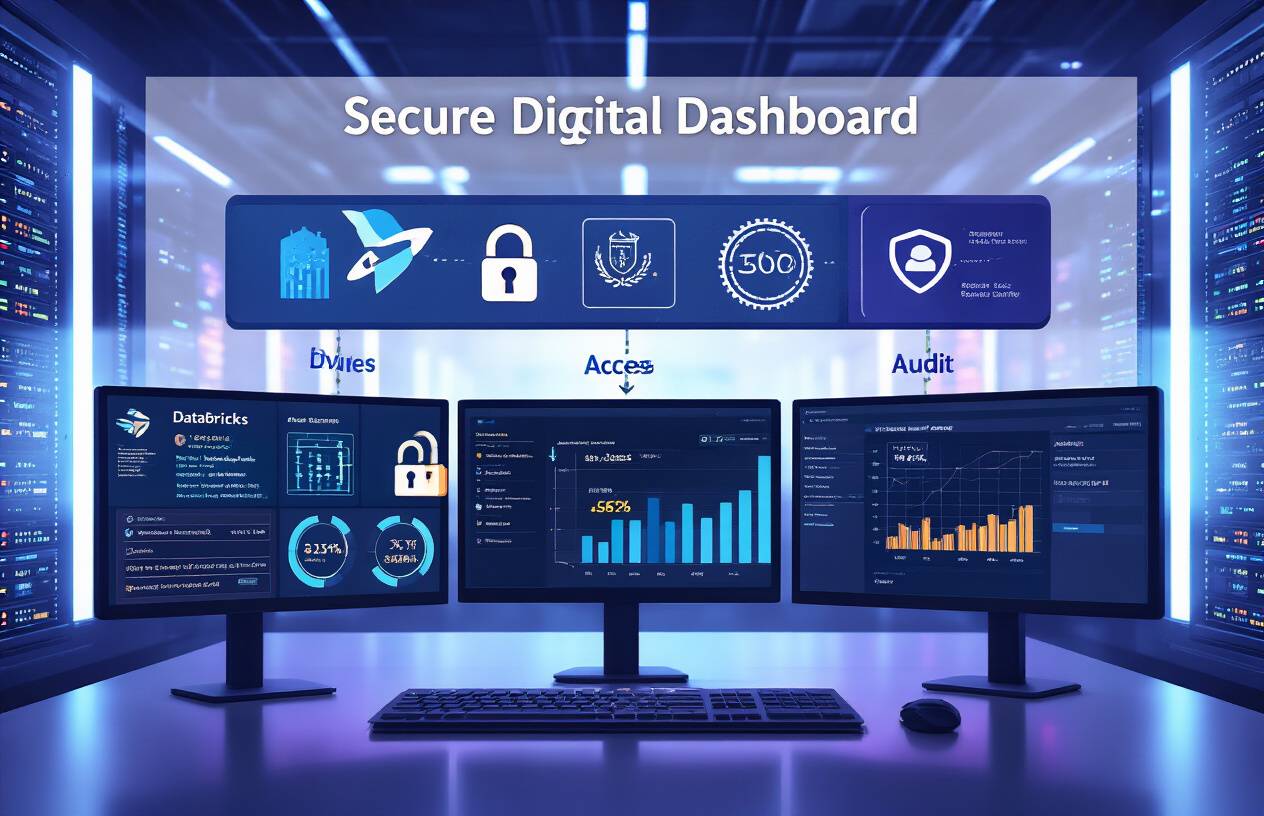Databricks Serverless offers data engineers and data scientists a way to run workloads without managing infrastructure. This guide helps technical teams maximize their Databricks investment through proven best practices.
We’ll explore how to properly configure serverless resources to reduce costs, implement data engineering techniques that leverage Databricks’ unique features, and apply performance optimization strategies that make your workloads run faster. You’ll learn practical approaches to resource management, workflow orchestration, and security that real organizations use today.
Understanding Databricks Serverless Architecture

What makes Databricks Serverless different from traditional deployments
Traditional Databricks clusters require you to manage infrastructure – picking instance types, configuring autoscaling, and worrying about cluster startup times. Serverless flips this model on its head.
With Databricks Serverless, you don’t manage clusters at all. You simply run your workloads, and Databricks handles the rest. The platform automatically provisions the right compute resources when you need them and scales them down when you don’t.
The key difference? You’re freed from thinking about infrastructure. No more waiting for clusters to start up or tweaking autoscaling parameters. Your team can focus on data and code instead of compute management.
Plus, Serverless comes with instant startup times. Run a query and it executes immediately – no more waiting minutes for clusters to spin up.
Key components and services of the Databricks Serverless ecosystem
The Serverless ecosystem in Databricks consists of several powerful components working together:
- Serverless SQL warehouses: Zero-management compute for running SQL queries with instant startup
- Serverless jobs: Run notebooks and workflows without provisioning clusters
- Photon engine: Databricks’ highly optimized query engine that delivers blazing performance
- Workspace integration: Seamless connection with the entire Databricks platform
- Unity Catalog: Integrated governance layer for data security and discovery
These components work together to create a cohesive experience. For example, SQL queries executed in Serverless SQL warehouses automatically leverage the Photon engine for faster performance without any configuration.
When to choose Serverless over standard clusters
Standard clusters aren’t going away – they’re still perfect for certain scenarios. But Serverless shines in many common situations:
- Interactive data exploration: When analysts need immediate results without waiting for clusters
- Unpredictable workloads: When your compute needs vary wildly throughout the day
- SQL-heavy workflows: Especially when running many small-to-medium queries
- Cost-sensitive environments: When you need tight control over compute spending
- Teams without DevOps expertise: When you lack resources for infrastructure management
I typically recommend Serverless for data science teams that want to focus on insights rather than infrastructure. The immediate startup times make it perfect for iterative work.
Cost-benefit analysis of Serverless implementation
Serverless isn’t just about convenience – it often delivers significant financial benefits too:
| Aspect | Standard Clusters | Serverless |
|---|---|---|
| Billing | Per provisioned node-hour | Per actual compute second |
| Idle costs | Pay for idle clusters | Zero idle costs |
| Startup costs | Minutes of non-productive time | Instant startup |
| Management overhead | Significant team time | Minimal management |
The per-second billing alone can slash costs for bursty workloads. One client of mine cut their Databricks spend by 40% by moving analytics workloads to Serverless.
Beyond direct costs, there’s the productivity boost. Data teams spend more time analyzing data and less time waiting for or managing infrastructure. This hidden benefit often outweighs the direct cost savings in high-value data science teams.
Optimizing Resource Management

Right-sizing compute resources for different workloads
Matching your compute resources to workload demands is key to Databricks Serverless success. Too much power? You’re burning money. Too little? Your jobs crawl and users get frustrated.
Start by categorizing your workloads:
| Workload Type | Characteristics | Recommended Resources |
|---|---|---|
| ETL/Data Engineering | CPU-intensive, potentially memory-hungry | Medium-high CPU count, adequate memory |
| ML Training | GPU-dependent, compute-intensive | GPU-enabled clusters with high memory |
| Interactive Analytics | Bursty usage patterns | Autoscaling with moderate initial size |
| Streaming | Consistent resource needs | Dedicated clusters with stable sizing |
The secret? Track job metrics to identify bottlenecks. If your Spark jobs spend time garbage collecting, you need more memory. If they’re CPU-bound, add more cores. Many teams start with the default settings and never adjust—big mistake.
Implementing auto-scaling strategies effectively
Auto-scaling is your best friend for handling variable workloads—when used right.
First off, set reasonable minimum and maximum worker counts. Starting too small causes cold-start delays, while setting maximums too high risks runaway costs.
For batch workloads, configure more aggressive scaling to handle spikes efficiently. For interactive notebooks, use more conservative settings to prevent constant scaling churn.
Don’t overlook scale-down behavior. Default timeouts might keep idle clusters running too long. Customize your idle timeout based on your typical usage patterns—shorter for dev environments, longer for production with frequent jobs.
A practical tip: analyze your historical job metrics before setting auto-scaling parameters. Look for patterns in resource utilization to predict your actual needs.
Managing concurrency for improved performance
Databricks Serverless clusters handle concurrent operations differently than traditional clusters. Without proper concurrency management, you’ll face job queuing and sluggish performance.
First, determine your concurrency requirements. How many users access the platform simultaneously? How many jobs run in parallel?
For high-concurrency workloads:
- Enable job scheduling with fair sharing
- Configure multiple smaller clusters rather than one massive cluster
- Separate interactive and automated workloads onto different clusters
The job scheduler in Databricks helps manage concurrency, but you need to tune it. Default settings aren’t always optimal for your specific workload mix.
Avoid the common trap of running too many heavy processes on a single cluster. This leads to resource contention that the scheduler can’t fully resolve.
Monitoring and adjusting resource allocation in real-time
Real-time monitoring separates Databricks power users from the amateurs. The platform offers robust monitoring capabilities—use them!
Set up dashboards tracking:
- Cluster utilization metrics
- Job completion times
- Resource bottlenecks
- Executor idle time
When monitoring reveals problems, don’t just throw more resources at it. Dig deeper. Is that slow job poorly written? Are shuffle operations causing network bottlenecks?
Make resource adjustments methodically. Change one parameter at a time, run benchmark tests, and compare results. Hasty changes often create new problems.
The Spark UI provides incredible insights into execution plans and resource usage. It’s not just for debugging—it’s a proactive optimization tool.
Cost optimization techniques for Serverless environments
Databricks Serverless offers flexibility, but costs can spiral without proper oversight.
These practical steps will keep your bill in check:
- Implement automated cluster termination for idle resources
- Use job clusters instead of all-purpose clusters where possible
- Leverage spot instances for non-critical workloads
- Schedule intensive jobs during off-peak hours
Databricks offers usage reporting that shows exactly where your DBUs are going. Use it regularly to spot wasteful patterns.
Don’t forget to right-size your storage too. Unnecessary data replication or storing unused temporary results increases costs silently.
The biggest cost optimization win? Education. When teams understand resource costs, they naturally write more efficient code and make better infrastructure choices.
Data Engineering Best Practices

Structuring ETL pipelines for Serverless efficiency
ETL pipelines on Databricks Serverless need a complete rethink. Gone are the days of maintaining constantly-running clusters eating up resources while idle.
Break your pipelines into bite-sized functions instead of monolithic scripts. Each function should do exactly one thing – extract, transform, or load – with clear inputs and outputs. This approach lets Databricks scale each step independently.
# Instead of this
def giant_etl_process():
# 500 lines of mixed extraction, transformation and loading
# Do this
def extract_customer_data():
# 30 lines focused only on extraction
def transform_customer_addresses():
# 25 lines focused only on transformation
Set appropriate timeout configurations. Serverless compute terminates after the job completes, but poorly structured pipelines might hang. Add timeouts to prevent runaway costs:
spark.conf.set("spark.databricks.serverless.maxJobDuration", "3h")
Use job clusters for scheduled work rather than all-purpose clusters. They spin up exactly when needed and shut down automatically when done.
Implementing Delta Lake with Serverless for reliable data processing
Delta Lake and Serverless are a match made in heaven. Delta’s ACID transactions guarantee data reliability even when serverless compute might terminate unexpectedly.
Enable auto-compaction to keep your Delta tables optimized:
spark.conf.set("spark.databricks.delta.autoCompact.enabled", "true")
This saves you from running manual OPTIMIZE commands, which is particularly valuable in the start-stop nature of serverless environments.
Delta’s time travel capabilities act as a safety net for serverless jobs:
# Roll back to previous version if something goes wrong
df = spark.read.format("delta").option("versionAsOf", 3).load("/path/to/table")
Vacuum less frequently in serverless environments. Let your retention period be at least 7 days to ensure you don’t lose history between job runs:
spark.conf.set("spark.databricks.delta.retentionDurationCheck.enabled", "false")
spark.sql("VACUUM my_delta_table RETAIN 168 HOURS")
Maximizing throughput with partition optimization
Partitioning makes or breaks serverless performance. Too many partitions? Excessive overhead. Too few? Underutilized resources.
The rule of thumb: aim for partition sizes between 100MB and 1GB. Anything smaller creates overhead, anything larger reduces parallelism.
Don’t just partition by date blindly. Think about your query patterns:
# If queries typically filter by both date and region
df.write.partitionBy("date", "region").format("delta").save("/path/to/table")
Dynamic partition pruning becomes crucial in serverless environments. It reduces unnecessary data scanning:
# This enables DPP
spark.conf.set("spark.sql.optimizer.dynamicPartitionPruning", "true")
Monitor skew in your data. Uneven partitions kill performance even more in serverless contexts because you pay for the longest-running task:
# Detect skew
df.groupBy("partition_column").count().orderBy("count", ascending=False).show(10)
Handling streaming data efficiently in Serverless contexts
Streaming in serverless requires special attention. The stop-start nature can break traditional streaming patterns.
Use checkpointing religiously. When your serverless compute restarts, checkpoints ensure you don’t reprocess data:
query = (streamDF.writeStream
.format("delta")
.option("checkpointLocation", "/checkpoints/my_stream")
.start("/tables/my_stream_table"))
Structure your streaming jobs with small batch intervals. Serverless excels with frequent, small processing windows rather than long-running jobs:
spark.conf.set("spark.sql.streaming.minBatchesToRetain", "100")
streamDF.writeStream.trigger(processingTime='1 minute')
Implement error handling that auto-retries. Temporary failures are more common in serverless environments:
def process_batch(df, epoch_id):
try:
# Process the micro-batch
except Exception as e:
# Log the error and retry
streamDF.writeStream.foreachBatch(process_batch)
Keep your stream processing stateless where possible. State management across serverless restarts gets tricky.
Performance Tuning Strategies

Query Optimization Techniques Specific to Serverless
Databricks Serverless environments have their own quirks when it comes to query optimization. First off, avoid SELECT * queries like the plague. They’re memory hogs and will eat up your compute resources faster than you can say “cost overrun.”
Instead, be specific about what you need:
- Select only necessary columns
- Apply filters as early as possible in your query
- Use appropriate partition pruning to minimize data scanned
For complex joins, reorder them strategically by putting the smallest tables first. This simple change can reduce memory pressure dramatically.
Another game-changer? Use Z-ORDER BY on your Delta tables for columns frequently used in filters. It’s like giving your queries a turbo boost without any extra effort from you.
OPTIMIZE my_table ZORDER BY (common_filter_column)
Caching Strategies to Reduce Computation Costs
Caching is your secret weapon in Serverless. When done right, it can slash costs while supercharging performance.
DataFrames you use repeatedly? Cache them:
# Cache a frequently used DataFrame
frequent_df.cache()
# After you're done
frequent_df.unpersist()
But don’t go cache-crazy. Only cache what you’ll reuse multiple times, and be smart about when to unpersist.
For SQL users, take advantage of the CACHE TABLE command:
CACHE TABLE my_frequently_used_table
Keep an eye on your cache size though. If it grows too large, you’ll trigger spilling to disk, which defeats the purpose.
Pro tip: In Serverless environments, caching is cleared when clusters auto-stop. Structure your notebooks to rebuild essential caches efficiently when clusters restart.
Managing Photon Acceleration for Analytical Workloads
Photon isn’t just a fancy feature – it’s a performance multiplier for your analytical workloads. But you need to know how to tame it.
First, check if Photon is actually being used:
spark.conf.get("spark.databricks.photon.enabled")
For maximum Photon acceleration:
- Use columnar data formats (Parquet, Delta)
- Stick with supported data types (avoid complex nested structures)
- Keep your filter predicates simple
When Photon seems to underperform, it’s often because of unsupported operations falling back to Spark. The query plan will show you exactly where:
df.explain(mode="cost")
Look for “WholeStageCodegen” sections – they indicate where Photon is working its magic.
Addressing Common Performance Bottlenecks
The most common Serverless performance killers aren’t complicated – they’re just easy to miss.
Data skew tops the list. When one partition has significantly more data than others, that executor becomes your bottleneck. Fix it with:
# Repartition to distribute data more evenly
df = df.repartition(num_partitions, "key_column")
Broadcast joins can be lifesavers for small-to-medium tables:
from pyspark.sql.functions import broadcast
result = large_df.join(broadcast(small_df), "join_key")
Watch out for UDFs – they’re performance vampires. Replace them with Spark SQL functions whenever possible.
Memory pressure often shows up as executor failures. Don’t ignore those – adjust your cluster configuration or optimize your code. Sometimes splitting complex operations into stages with intermediate writes can save you from memory headaches.
Security and Governance in Serverless Environments

Implementing fine-grained access controls
Security in Databricks Serverless isn’t something you can just set and forget. It starts with properly implemented access controls.
The most effective approach? Table Access Control (TAC) combined with Attribute-Based Access Control (ABAC). This combo lets you restrict access at both the database level and the row/column level.
# Example: Column-level security implementation
spark.sql("ALTER TABLE customer_data SET TBLPROPERTIES ('delta.columnMapping.mode' = 'name')")
spark.sql("GRANT SELECT(name, city) ON TABLE customer_data TO data_analysts")
Don’t make the rookie mistake of giving blanket permissions. Instead, create role-based policies aligned with job functions. Your data scientists need different access than your analysts.
Want to sleep better at night? Use Unity Catalog to manage permissions across your entire data estate from a single control plane.
Data encryption best practices
Encryption isn’t optional anymore. Period.
For Databricks Serverless, you need both encryption-at-rest and encryption-in-transit:
- Enable Transparent Data Encryption (TDE) for DBFS and managed tables
- Configure customer-managed keys (BYOK) rather than platform-managed keys
- Use TLS 1.2+ for all API connections
Here’s what proper encryption configuration looks like:
{
"encryption": {
"singleUser": true,
"managedServices": {
"enabled": true
},
"keyProvider": {
"awsKms": {
"keyArn": "arn:aws:kms:region:account:key/key-id"
}
}
}
}
The performance hit? Negligible. The peace of mind? Priceless.
Audit logging and compliance considerations
Audit logs are your best friend when something goes wrong (and trust me, something will).
Set up Databricks diagnostic logs to capture:
- Who accessed what data
- When transformations ran
- What changes were made to permissions
- API calls and authentication events
Configure log forwarding to your SIEM solution for centralized monitoring. Don’t just collect logs—analyze them!
For compliance like GDPR, HIPAA, or SOC2, document your Databricks Serverless setup with:
- Data lineage tracking
- Retention policies
- Access justifications
- Regular compliance reviews
The compliance dashboard in Databricks Unity Catalog is surprisingly useful here—it gives you a quick view of any security gaps.
Managing secrets and credentials securely
Hardcoding credentials in notebooks? Stop that. Right now.
The proper way:
- Store all secrets in Databricks Secret Scope
- Reference them in your code with dbutils.secrets.get()
- Rotate keys regularly
- Implement just-in-time access for admin credentials
# Don't do this
connection_string = "jdbc:postgresql://hostname:port/database?user=username&password=password"
# Do this instead
connection_string = f"jdbc:postgresql://hostname:port/database?user={dbutils.secrets.get('scope', 'username')}&password={dbutils.secrets.get('scope', 'password')}"
For service principals, use OAuth tokens with limited scopes and short expiration times. And please, audit secret access regularly.
Network security configurations
Network security often gets overlooked in serverless environments. Big mistake.
For rock-solid Databricks Serverless security:
- Deploy in a private subnet with VPC endpoints
- Use IP access lists to restrict notebook and API access
- Configure private link connectivity to data sources
- Implement outbound traffic filtering
Network policy example:
{
"networkPolicy": {
"enableEgress": true,
"egressAllowedCIDRs": ["10.0.0.0/8"],
"enablePrivateLink": true,
"publicIpRules": [
{
"cidr": "203.0.113.0/24",
"protocol": "tcp",
"port": 443
}
]
}
}
Not sure if your network is properly secured? Run regular penetration tests against your Databricks deployment. The findings might surprise you.
Integration and Workflow Orchestration

Connecting Databricks Serverless with External Systems
Getting your Databricks Serverless environment to play nice with external systems isn’t just nice-to-have—it’s critical for most data workflows. The good news? Databricks makes this surprisingly straightforward.
First off, you’ve got tons of native connectors at your disposal. Need to pull data from Snowflake? There’s a connector for that. S3 buckets? Yep. Azure Data Lake? You bet.
# Example: Reading from S3
df = spark.read.format("csv").option("header", "true").load("s3a://your-bucket/path/to/file.csv")
For APIs without native connectors, the Databricks REST API comes to the rescue. You can also leverage Spark’s JDBC driver for most database connections.
Pro tip: Store your connection credentials in Databricks Secrets rather than hardcoding them. Your future self will thank you when you’re not hunting down credentials in 20 different notebooks.
Orchestrating Complex Workflows with Minimal Overhead
The beauty of Databricks Serverless for workflow orchestration? You’re not managing infrastructure while juggling complex pipelines.
Databricks Jobs and workflows let you chain notebooks and tasks together with simple dependency definitions. Want notebook B to run only after notebook A succeeds? Just set it up in the workflow UI or via API.
For more complex orchestration patterns, Databricks Workflows supports:
- Conditional execution paths
- Parameter passing between tasks
- Parallel task execution
- Time-based scheduling with CRON expressions
Many teams overlook the power of Databricks Workflow’s repair and recovery features. When a task fails mid-pipeline, you can restart from the failure point rather than running the entire workflow again.
CI/CD Pipelines for Serverless Applications
Building robust CI/CD pipelines for your Databricks Serverless applications dramatically improves code quality and deployment reliability.
Start by version controlling your notebooks and related code in Git. Databricks’ Git integration makes this painless—you can connect directly to GitHub, GitLab, or Bitbucket repositories.
A solid CI/CD pipeline for Databricks typically includes:
| Stage | Tools | Purpose |
|---|---|---|
| Code Validation | Databricks CLI, pytest | Run unit tests, validate notebook functionality |
| Integration Testing | Databricks Jobs API | Test end-to-end workflows in dev environment |
| Deployment | Databricks Repos, terraform | Promote code to production workspace |
The Databricks CLI is your best friend here. It allows you to automate notebook deployment between environments:
databricks workspace import_dir local_dir /Shared/production/project --overwrite
Implementing Effective Error Handling and Retry Mechanisms
Nothing kills productivity faster than constantly babysitting jobs because they fail on transient errors. Robust error handling in Databricks Serverless needs thought, not just try/except blocks everywhere.
Build resilience into your code with strategic retry logic:
from retry import retry
@retry(tries=3, delay=2, backoff=2)
def fetch_external_data(endpoint):
# Your code here that might face transient failures
For workflow-level resilience, Databricks Job scheduler includes retry settings for the entire job. Configure these based on your job’s criticality and expected failure modes.
Don’t just log errors—make them actionable. Set up email alerts for critical failures, but be smart about notification thresholds to avoid alert fatigue.
The most overlooked aspect? Post-failure recovery paths. Build your workflows to handle partial failures gracefully, preserving successfully processed data rather than starting from scratch.
Real-world Implementation Patterns

Batch Processing Optimization Techniques
Batch jobs are the bread and butter of data pipelines, but many teams struggle with inefficient runs. I’ve seen companies slash processing times by 70% with these simple adjustments:
- Right-size your clusters – Don’t guess. Start small and scale up only when needed.
- Partition smartly – Too many small files? Too few large ones? Both kill performance. Aim for partitions between 100MB-1GB for optimal throughput.
# Before: Poor partitioning
df.repartition(1000) # Too many small partitions!
# After: Optimized partitioning
df.repartition(spark.conf.get("spark.sql.shuffle.partitions"))
- Cache strategically – Only cache datasets you’ll reuse multiple times, and remember to unpersist when done.
The game-changer? Serverless compute automatically handles most of this heavy lifting for you.
Interactive Analytics Acceleration Strategies
Real talk: Nothing frustrates data scientists more than waiting for queries to complete. Serverless shines here with these approaches:
- Pre-compute common aggregations – Build materialized views for frequently accessed metrics
- Use Delta Lake’s data skipping – This speeds up queries dramatically by avoiding unnecessary data scans
- Z-ordering on high-cardinality columns – This is pure magic for query performance:
OPTIMIZE my_table ZORDER BY (date_col, region, customer_id)
Machine Learning Workflow Enhancements
ML workflows on Databricks Serverless can go from “takes forever” to “done before lunch” with these patterns:
- Distributed hyperparameter tuning – Use MLflow with Hyperopt to parallelize experiments
- Feature store integration – Centralize and reuse features across models
- Pipeline caching – Stop recomputing the same transformations:
# Enable caching in your ML pipeline
from pyspark.ml import Pipeline
stages = [...]
pipeline = Pipeline(stages=stages).setCachingEnabled(True)
Building Responsive Data Applications
Data apps built on Serverless architecture respond instantly instead of making users stare at loading spinners:
- Precompute and cache user-specific views
- Implement incremental processing for real-time dashboards
- Use asynchronous processing patterns for compute-intensive operations
The best implementations combine serverless SQL endpoints with auto-scaling clusters to handle variable loads.
Migrating Existing Workloads to Serverless Architecture
Got a mess of legacy jobs? Follow this migration pattern that’s worked for dozens of enterprises:
- Start with non-critical batch jobs – Low risk, high learning opportunity
- Refactor monolithic scripts into modular functions
- Gradually adopt infrastructure-as-code to define your serverless resources
A phased migration beats a big-bang approach every time. One client cut cloud costs by 40% by moving just their development workloads to serverless first, then applying lessons learned to production.

Maximizing Databricks Serverless Potential
Adopting Databricks Serverless architecture transforms how organizations process and analyze data, offering tremendous benefits when implemented with the right practices. By optimizing resource management, following data engineering best practices, and implementing effective performance tuning strategies, teams can significantly enhance their productivity while reducing operational overhead. Proper security governance and thoughtful workflow orchestration further ensure that serverless implementations remain compliant and efficient at scale.
As you embark on your Databricks Serverless journey, focus on real-world implementation patterns that align with your specific use cases. Start with small, well-defined workloads before expanding to more complex scenarios. Remember that serverless isn’t just about technology—it’s about enabling your team to focus on delivering insights rather than managing infrastructure. Begin applying these best practices today to unlock the full potential of your data assets and gain a competitive edge in your analytics capabilities.



















